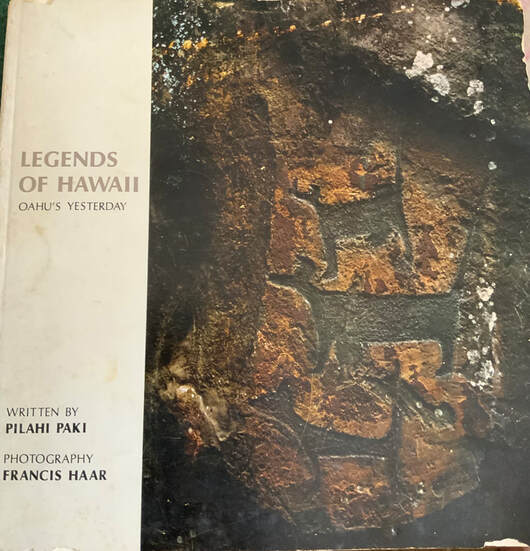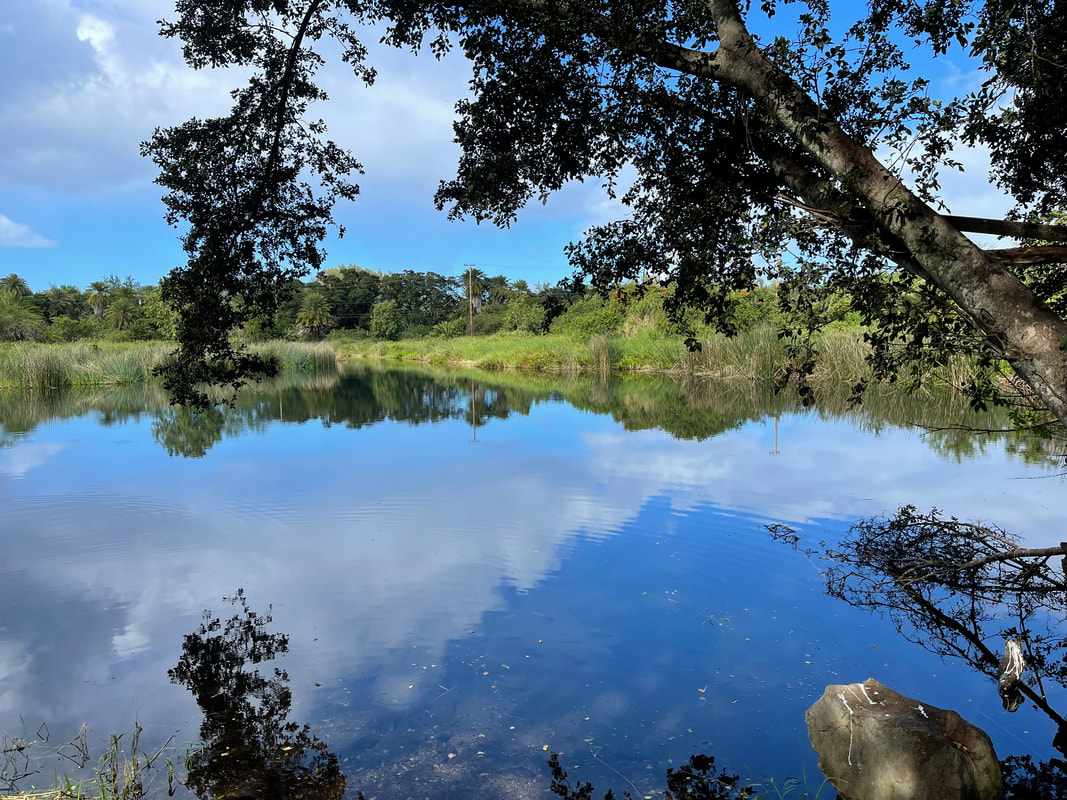AHUPUA‘A OF KAWAILOA
The loko iʻa fishpond in Haleiwa, traditionally named Loko Ea is a rare, significant cultural site nestled on Oʻahu’s North Shore. Loko Ea is located in the ahupuaʻa of Kawailoa, a land division from mountain to sea, in the moku land district of Waialua. The area is traditionally known for its profusion of fresh water springs and flowing streams. Famous was the moku of Waialua for its abundance and fertility, where mahiʻai farmers and kanaka lawaiʻa fishermen could sustain their families with bountiful harvests.
Loko Ea and Ukoʻa are two distinct loko puʻuone, sand-dune ponds near the ocean shore, connected to the sea by a stream or ditch, found in the district of Waialua. Connected physically through the streams and freshwater springs, they are also spiritually connected, as both are the home to Laniwahine, the moʻowahine female water guardian of the two fishponds. Together, they make up the third largest existing wetland on the island of Oʻahu.
Loko Ea is indeed an ancestral place of importance, a significant Wahi Pana to the people of Waialua. The site is associated with ancient deities, cultural practices and historical events. This fishpond once helped to sustain its community by providing aquatic food resources like native fish and seaweed. Over time, Loko Ea has unfortunately taken on an unprecedented amount of stress due to surrounding developments, mismanagement of resources and lack of continuous cultural practices. Today, Loko Ea is on a path to restoration with the help of the Mālama Loko Ea Foundation.
[1] Waialua: Voices from the Past by Roy Kakulu Alameida (Hawaiian Journal of History, Volume 28, 1994)
More information about North Shore cultural and environmental landscape and resourcs, including the North Shore Sustainability Plan
created by Kamehameha Schools, and includes the KS Mission and Strategic Plan
Loko Ea and Ukoʻa are two distinct loko puʻuone, sand-dune ponds near the ocean shore, connected to the sea by a stream or ditch, found in the district of Waialua. Connected physically through the streams and freshwater springs, they are also spiritually connected, as both are the home to Laniwahine, the moʻowahine female water guardian of the two fishponds. Together, they make up the third largest existing wetland on the island of Oʻahu.
Loko Ea is indeed an ancestral place of importance, a significant Wahi Pana to the people of Waialua. The site is associated with ancient deities, cultural practices and historical events. This fishpond once helped to sustain its community by providing aquatic food resources like native fish and seaweed. Over time, Loko Ea has unfortunately taken on an unprecedented amount of stress due to surrounding developments, mismanagement of resources and lack of continuous cultural practices. Today, Loko Ea is on a path to restoration with the help of the Mālama Loko Ea Foundation.
[1] Waialua: Voices from the Past by Roy Kakulu Alameida (Hawaiian Journal of History, Volume 28, 1994)
More information about North Shore cultural and environmental landscape and resourcs, including the North Shore Sustainability Plan
created by Kamehameha Schools, and includes the KS Mission and Strategic Plan
|
THE ECHO OF HALEʻIWA
Haleʻiwa, is the area, which in times long ago, was the home of the black storm bird, the Iwa or petrel bird. These birds would fly and soar landward in warning circles, when a bad storm would be approaching from far-off horizon. At Haleʻiwa too, is the ancient fishponds of ʻUko’a, where the moi or threadfish, and ama-ama or mullet, were plentiful. The ponds of ʻUko’a, can be seen on the left of the road by the old bridge. In the days gone by, when the tides rose, the echoing voice of the sea could be heard, softly at first, then loudly, in rhythmic crescendo. The old folks or tutu’s had a saying “I Waialua ka po’pona a ke kai. O ka lei ka Ewa, e ho’olono nei.” Translated means, “The pounding surfs break at Waialua, and the roaring is heard at distant Ewa.” Such, was the expression of the echoes coming from the Uko’a fishponds. In that time of the old folks, our tutu’s expressions were more than just sounding echoes that came from the sea or ocean surfs. The echo of the sea goes on and on, sounding the message of Aloha to the end of time. At Hale-iwa too, in long ago, the menehune folks fished at night. On certain dark nights, when the tides are low, the voices of the menehune can be heard, and if you are good, so the old folks can take you on the fishing journey, you may see the flickering lights of their torches dancing in the sea waters. Modern people smile and say, “The glow is phosphorus, there are no spirits, and no mysteries.” But, the Hawaiians remind them, very gently that the wise menehune caught fish in the bays of Haleʻiwa and Waialua, and the ponds of ʻUko’a and carried their flickering torches long before the malihini, or strangers came to dwell in these islands of Hawaii. Nothing much remains of the old days, except the sounds of the echoing surfs and the windlike notes of the flutes whistling like spirit music from the walls of the temple ruins, deserted by mortals today. To hear the music of God in Nature, you must come out silently and reverently on the night of Kane. Your ear must be tuned to catch the ethereal beauty of the music, the faint sounds of beating drums, and the flutelike notes, the calling sounds of the Iwa birds soaring in the darkness above. The people of Haleʻiwa, Waialua, and all Hawaii, should try to listen to the beautiful sounds, that float from the past, on the wings of Time, and the echoes of the Spirit of Hawaii, ALOHA. |


